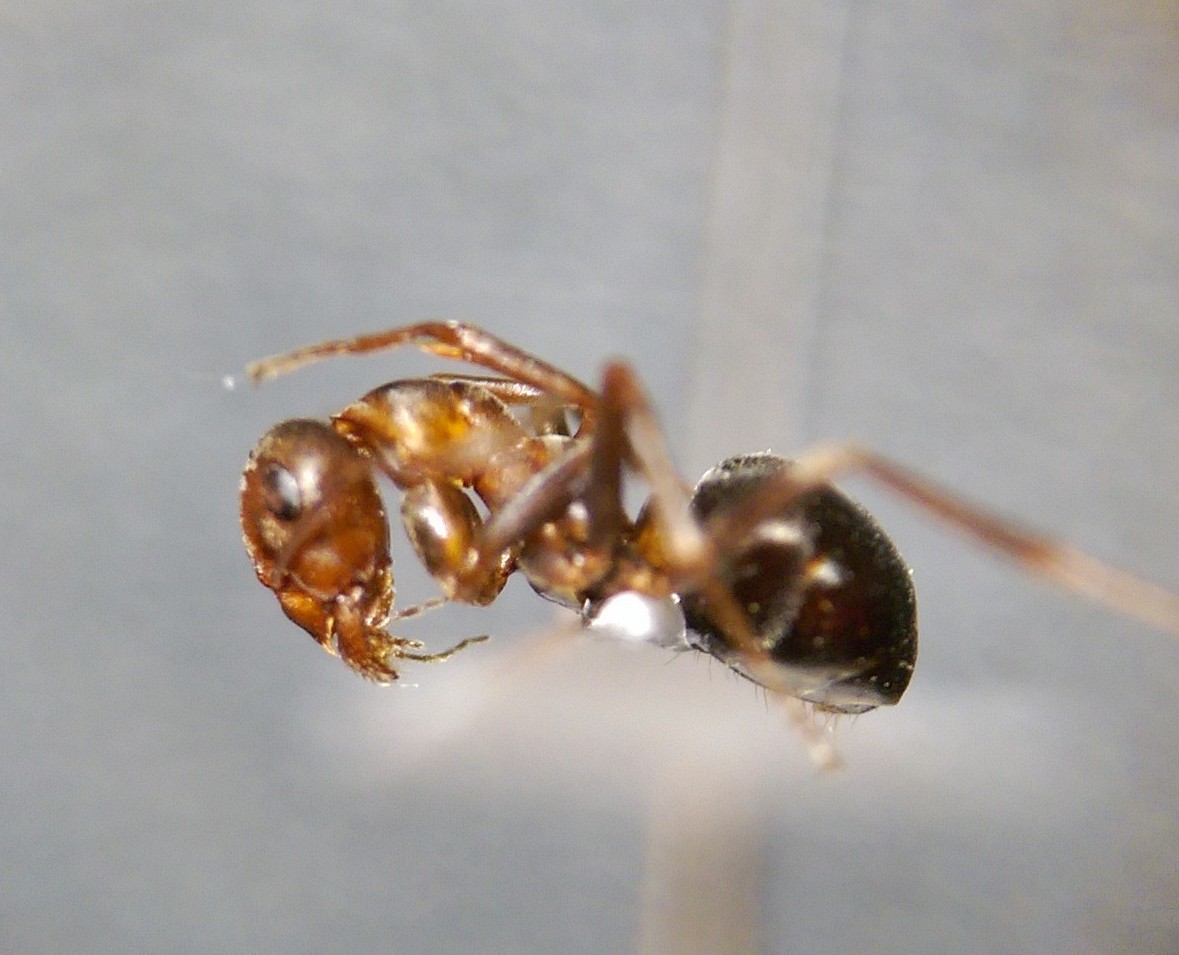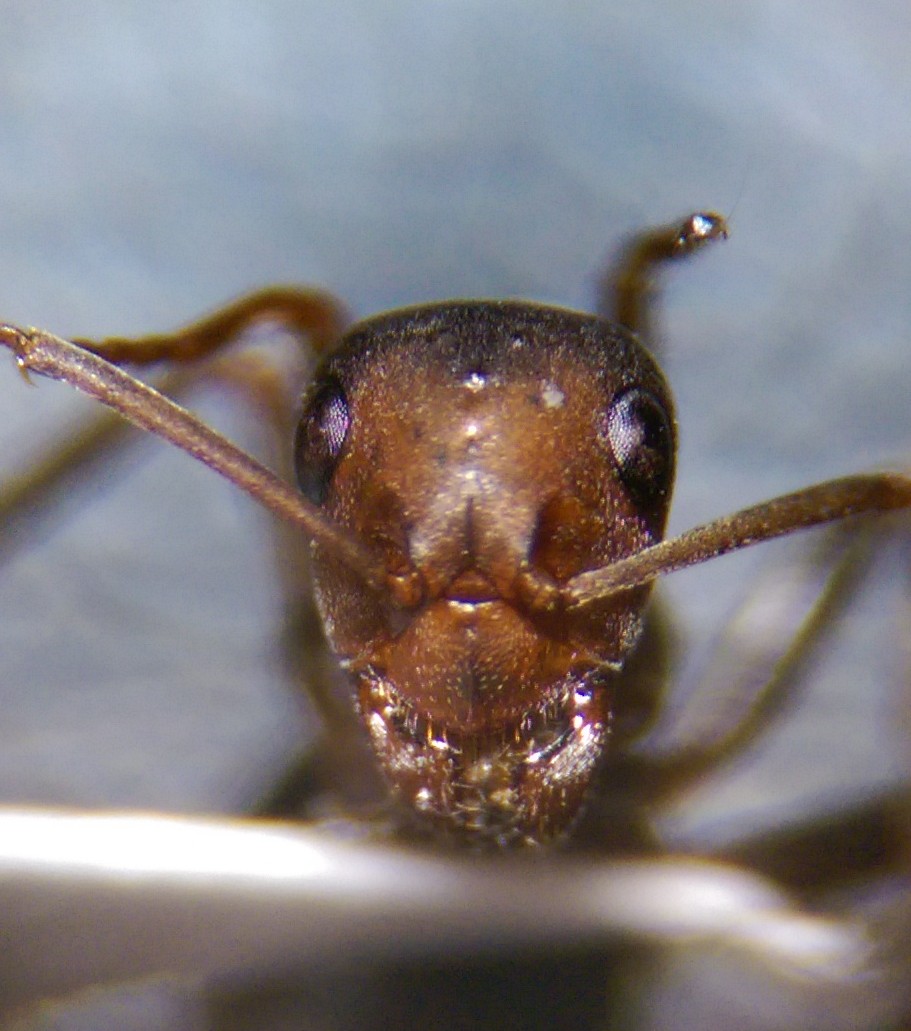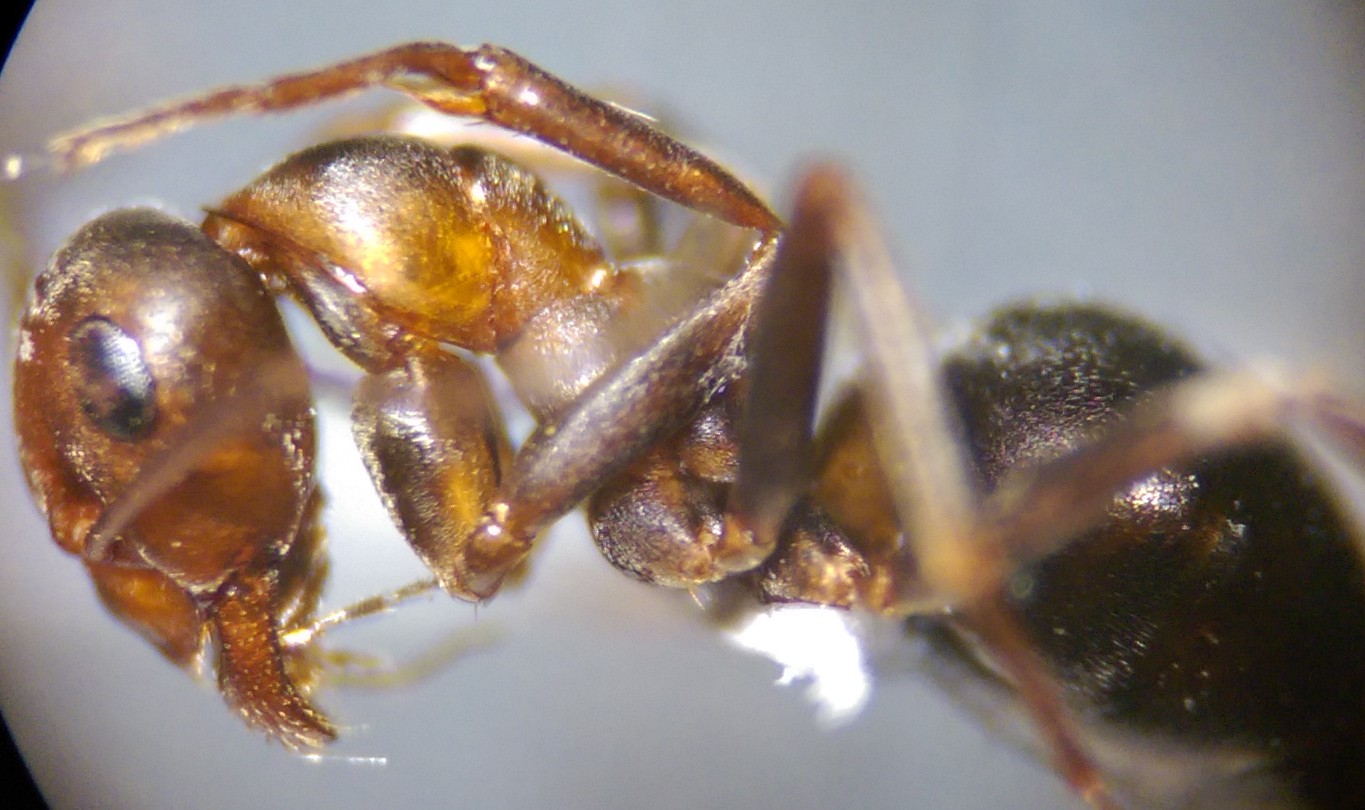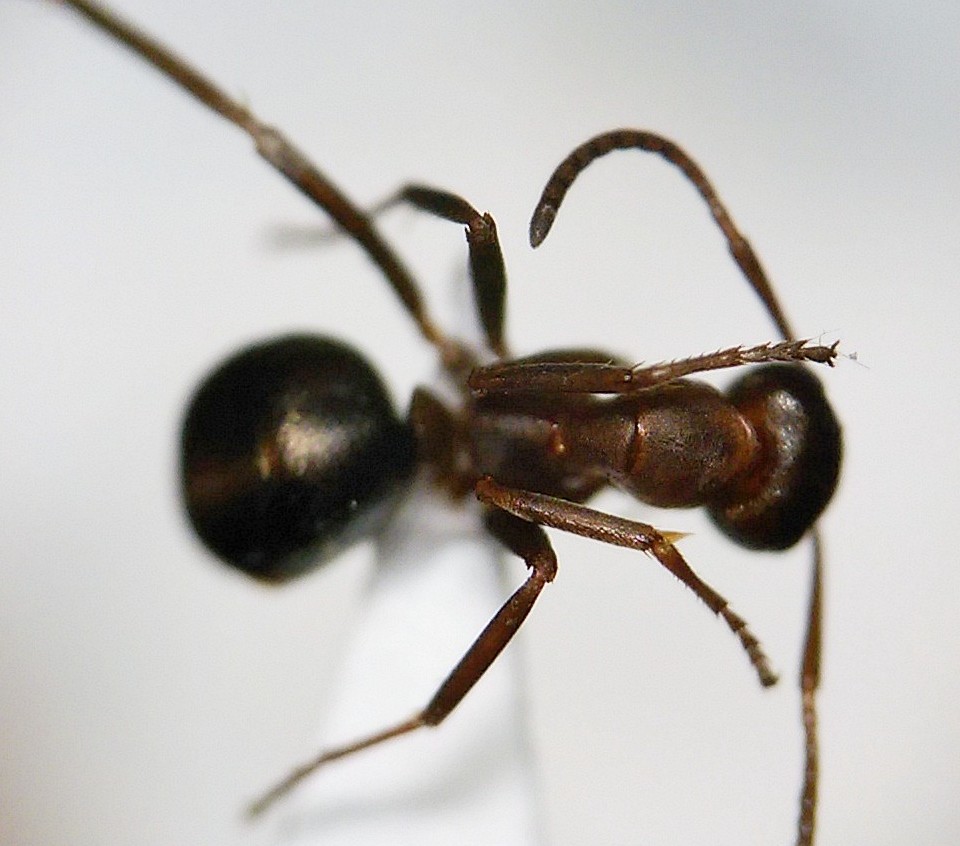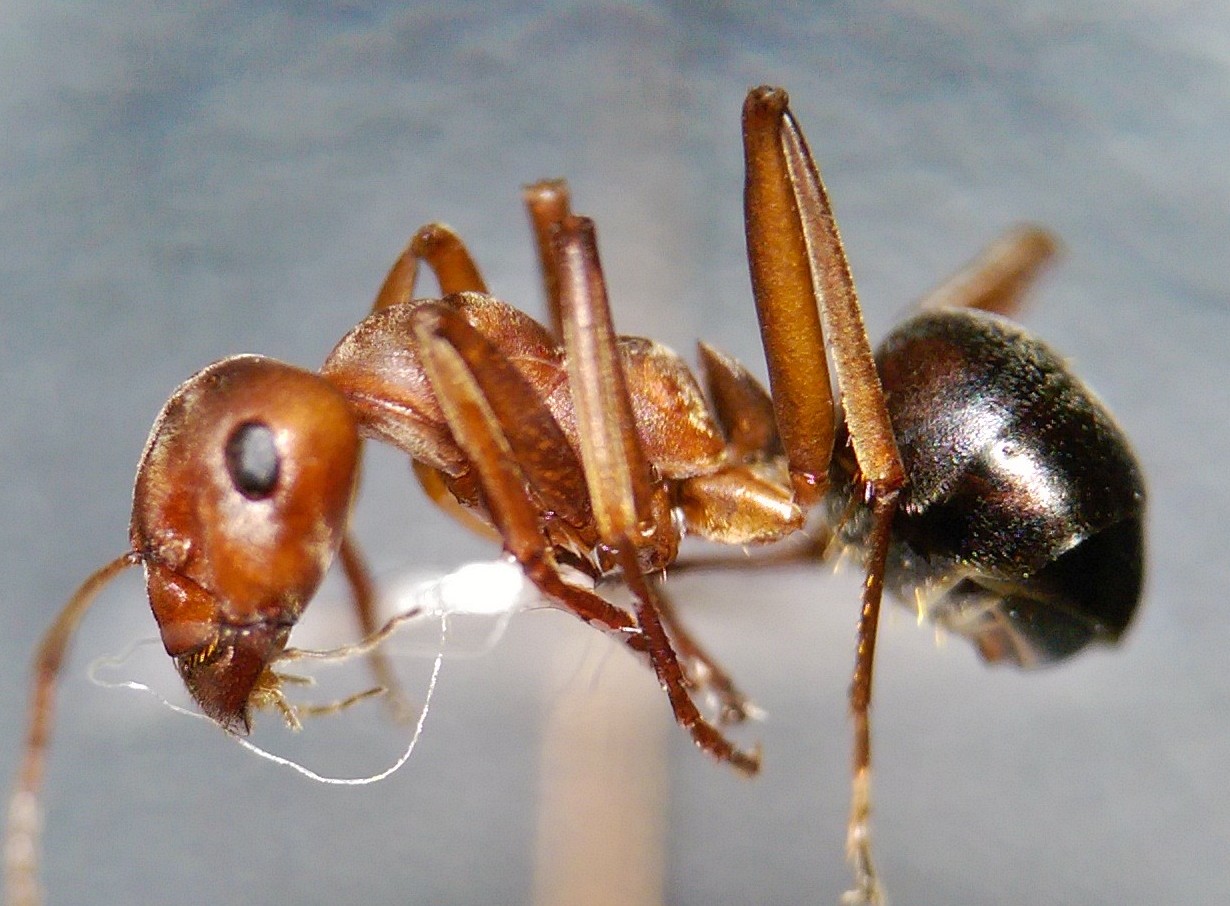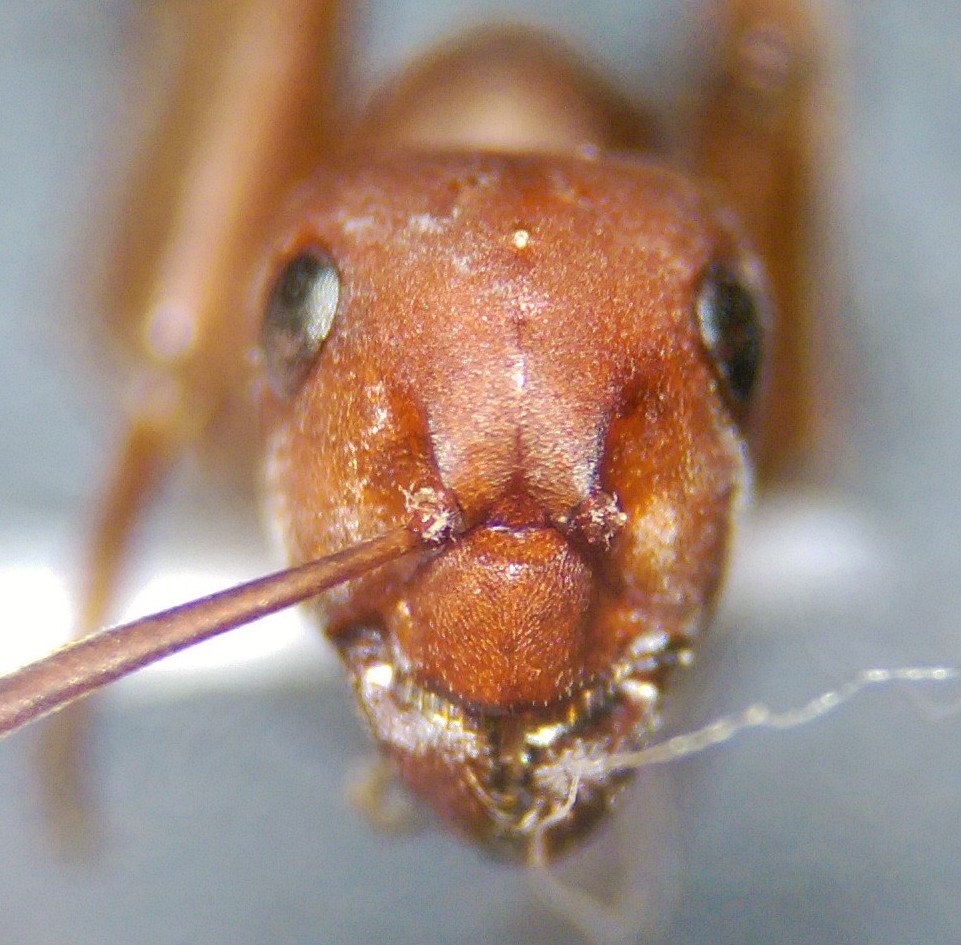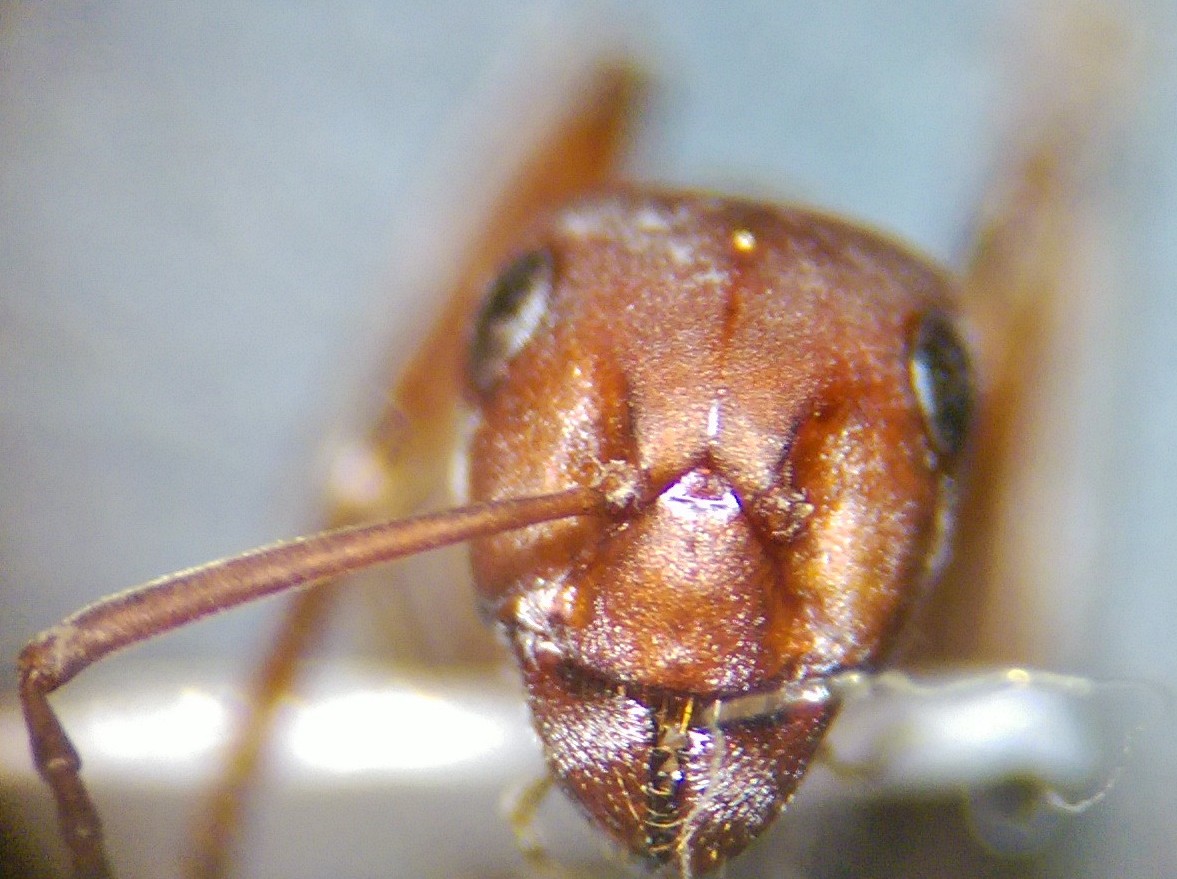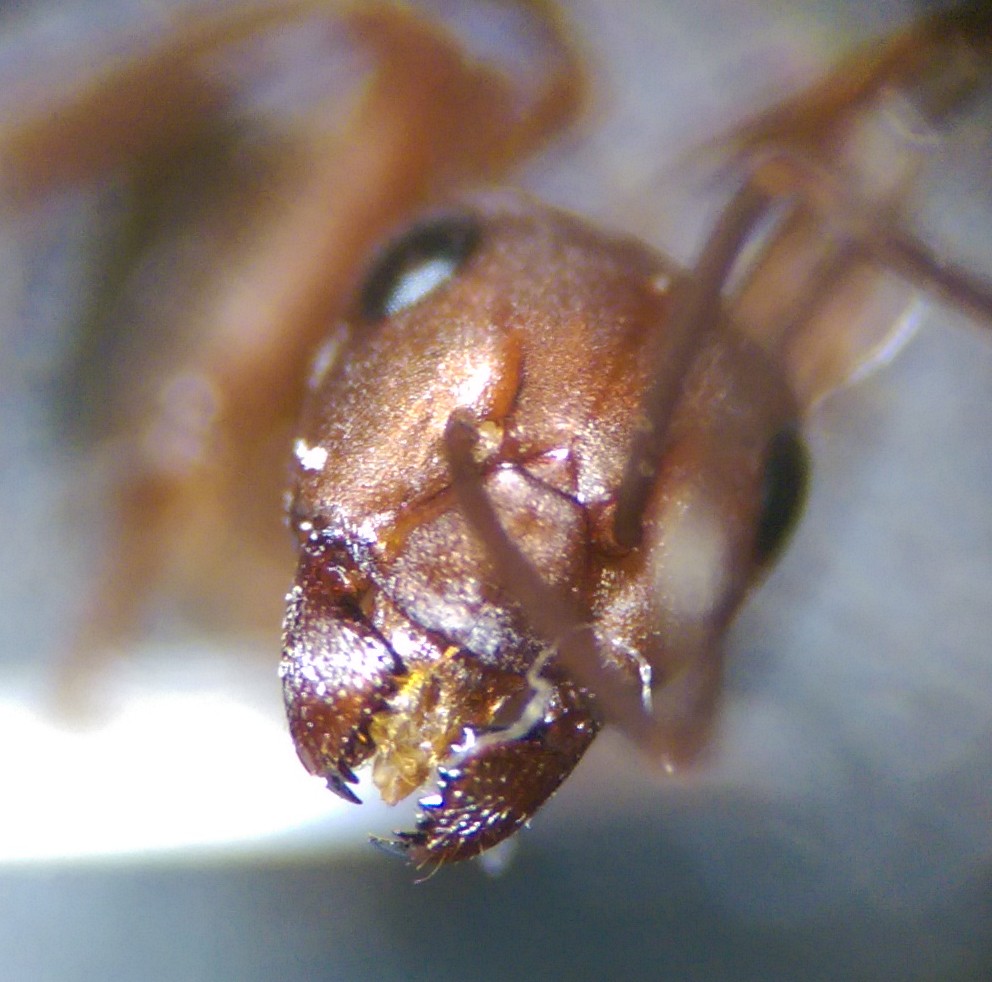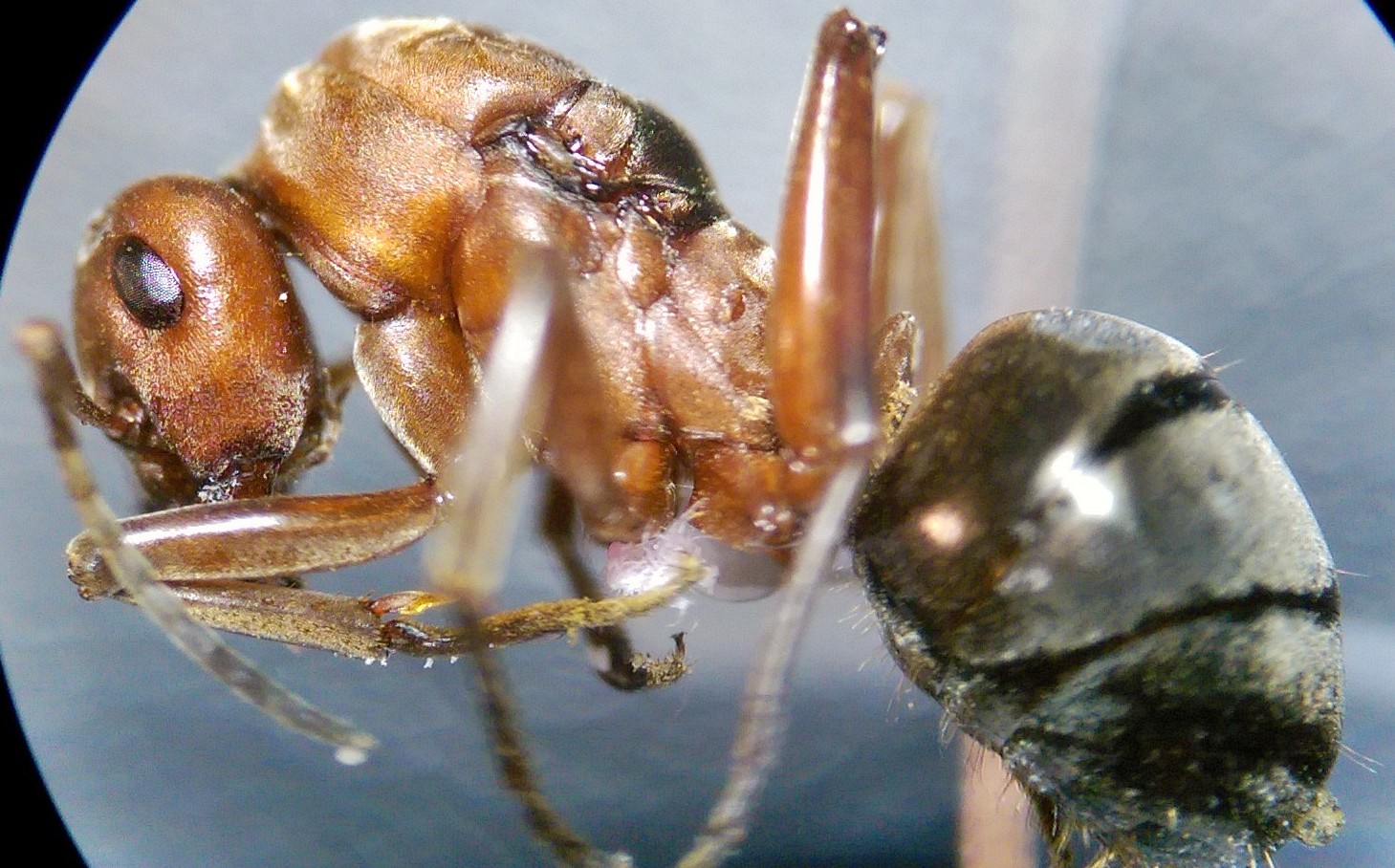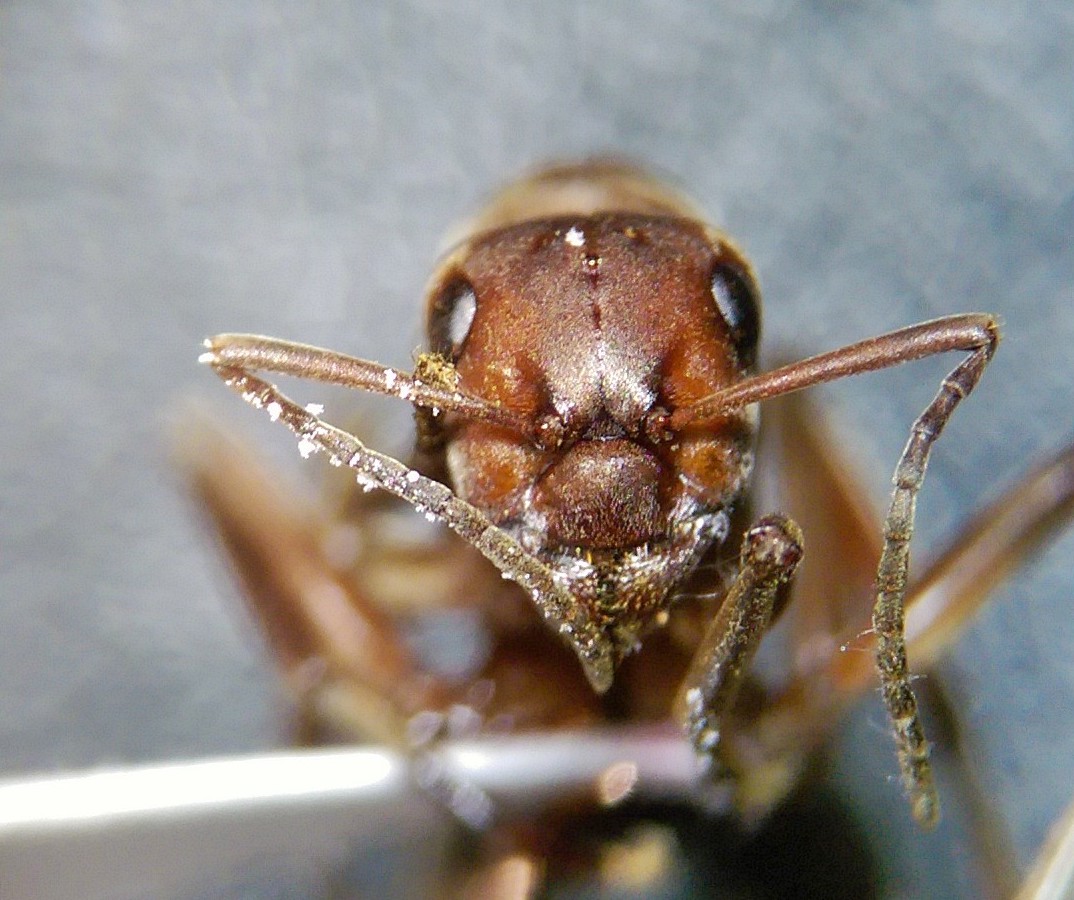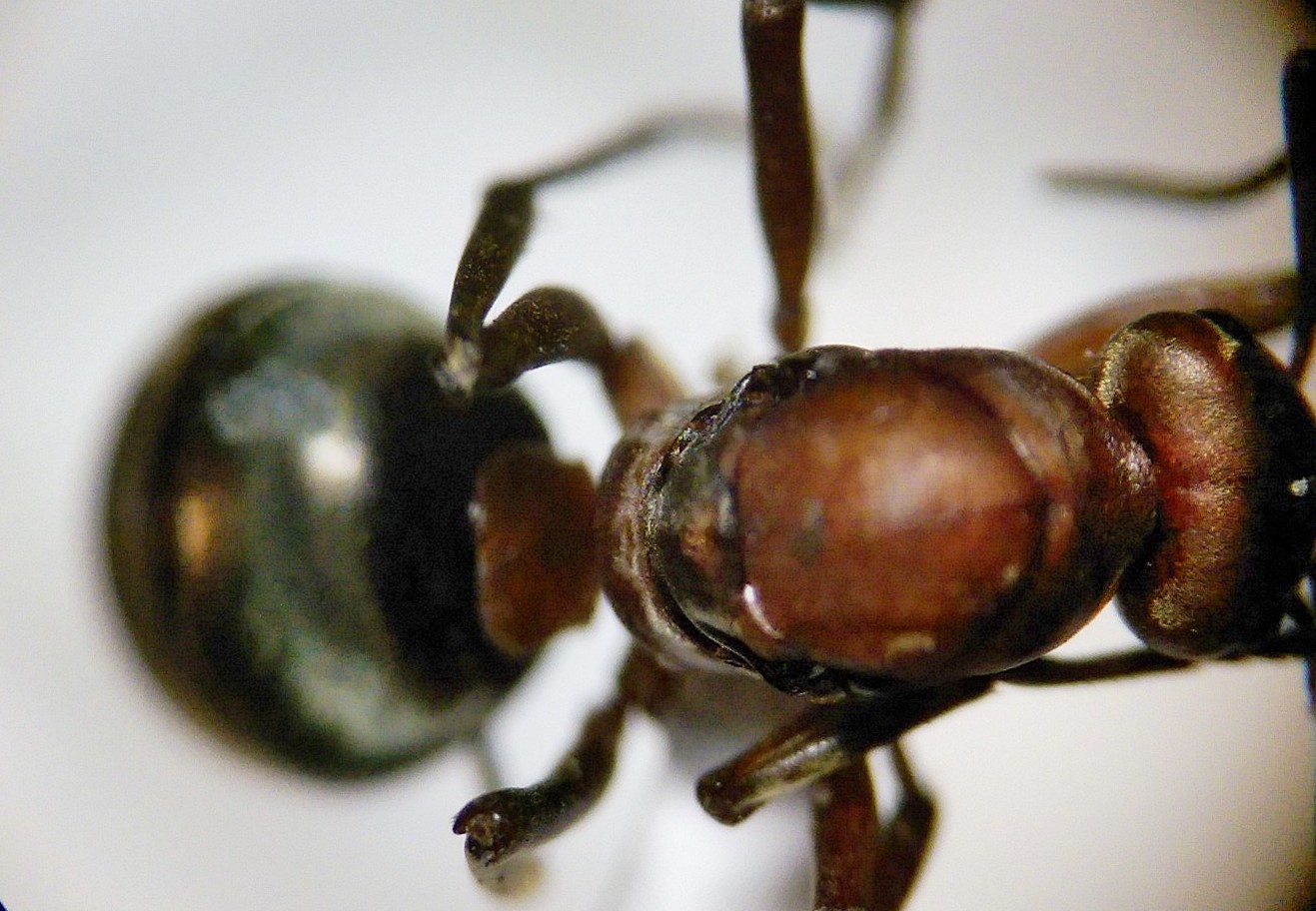Three different ants, all collected from same nest. To me, they seem to be Formica obscuriventris, but I wanted confirmation.
1. Location of collection: 36.48389603782802, -86.92995365255989
2. Date of collection: April, 2020
3. Habitat of collection: Dense hickory/oak woodland, under stone at base of mature hickory.
4. Length (from head to gaster): 5<mm minor, 7-8mm major, 10-11mm queen.
5. Color, hue, pattern and texture: N/A
6. Distinguishing characteristics: Polygyne, multiple gynes present, 4 at least.
7. Distinguishing behavior: Enslaving Formica subsericea.
8. Nest description: Small, conspicuous semi-thatched nest, hundreds, if not thousands of workers.
9. Nuptial flight time and date: N/A
Minor:
Major:
Queen:
Edited by TennesseeAnts, February 5 2021 - 7:33 AM.




